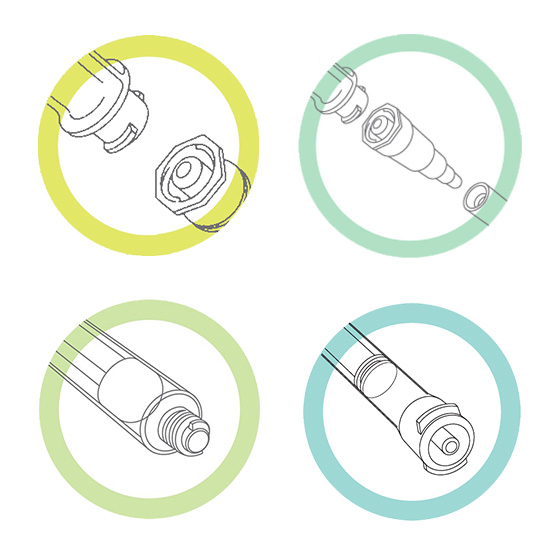IMPORTANT NOTE All material provided is intended for informational purposes only and should not be used to replace regulatory or company-specific documents, nor should it replace the advice of a qualified professional. This information is based on the proposed ISO 80369-3 standard and does not imply or suggest any regulatory clearance of any specific product and may not be predictive of clinical outcomes. Information provided does not imply endorsement of any specific product and is not intended to address any off-label use. All products and product designs are the responsibility of each specific legal manufacturer, distributor, or supplier. Products with these design features may be pending regulatory clearance or may not be available in a specific geography. Consult your supplier representative for product-specific use, availability, indications, contraindications, precautions, and warnings. This material is provided by GEDSA for informational purposes only. GEDSA is a 501(c)(6) Non-Profit Trade Association. GEDSA’s mission is to promote initiatives surrounding safe and optimal delivery of enteral feeding and connectivity.
The new design was a group effort. AAMI/ISO assembled the ISO 80369–3 Project Group
(PG-3). This group is a global representation of clinicians, practice experts, regulators, and industry participants. Through this open forum, any company interested in the ISO 80369 standard was allowed to participate. The PG-3 group identified, validated, and aligned to a global introduction of the new standard connector to systematically replace all prior enteral nutrition connector systems.
The purpose of the new connector is to help reduce the risk of enteral tube feeding misconnections and improve patient safety. The new ISO standard, ISO-80369, has been established for Luer connectors on the nutrition formula end and the patient-access end. There is just one standard nutrition formula connector that will be utilized by all feeding set manufacturers and universally adopted into practice.
Yes, enteral devices, including feeding tubes, administration sets, and enteral syringes are impacted by the initiative. A new enteral-specific ISO standard connector design has been identified and awaits final approval prior to introduction.
New ISO standard connectors have already been implemented and universally adopted
on the nutrition formula end of feeding/administration sets. All enteral device connectors including feeding tubes, administration sets, and medication, flush, and bolus feed syringes are anticipated to comply with the new ISO standard. Enteral-specific syringes will also be required to connect to the new enteral feeding connector for medication, flush, and bolus feed syringes.
What changes are coming to current connectors? And what are the implications of these new standards?
To reduce the frequency of medical tubing misconnections, an international group of clinicians, manufacturers and regulators, such as the FDA, is collaborating with the International Organization of Standardization (ISO) and the Association for the Advancement of Medical Instrumentation (AAMI) to develop ISO 80369 standards. Unique international standard designs will promote better patient safety and help ensure that connectors for unrelated delivery systems are incompatible. The program that is helping introduce the new standards is called the Stay Connected initiative for using safer connectors.
A small-bore connector is a connector with an inner diameter of less than 8.5mm that is used to link or join medical devices, components, and accessories for the purposes of delivering fluids or gases. A Luer connector is a classic type of a small-bore connector used commonly in the healthcare setting. The current universal design of the Luer connector allows for medical tubing misconnections—connections between unrelated delivery systems that have different intended uses (e.g., vascular, enteral, respiratory, epidural, and intrathecal).




